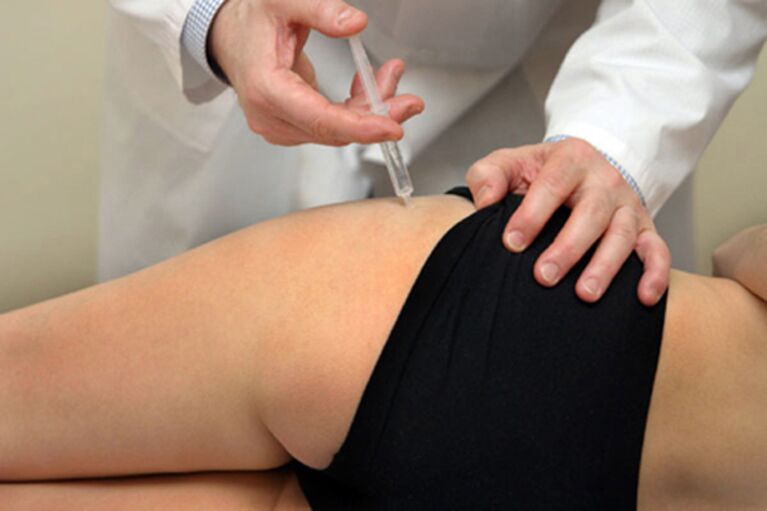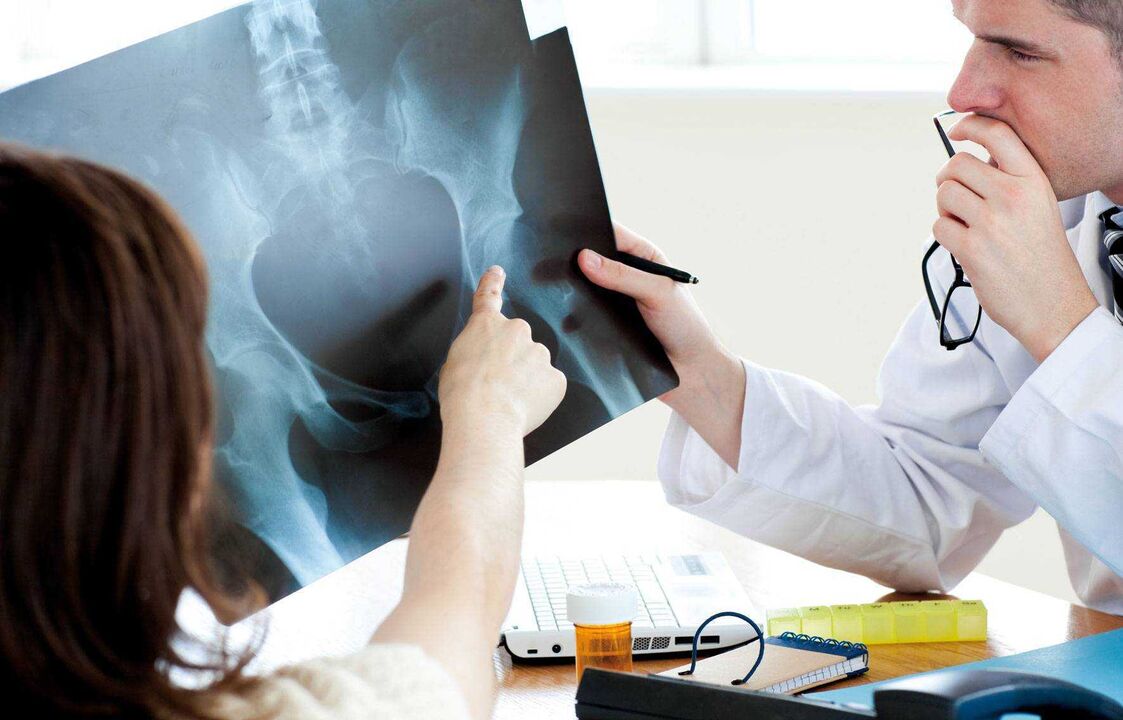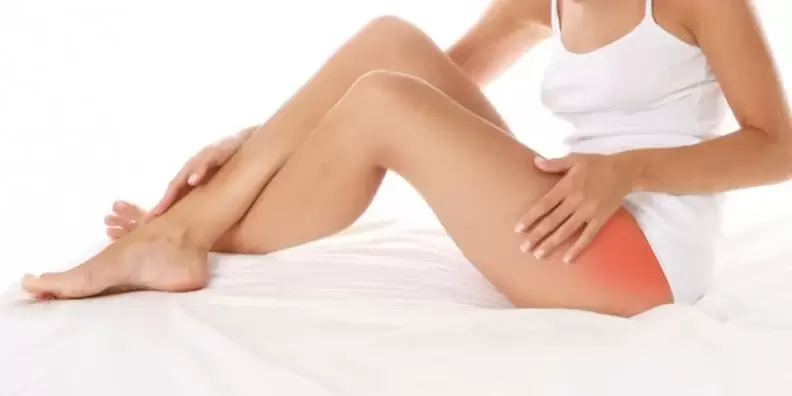
Coxarthrosis is a change in the hip joint, common among diseases, the basis of which are degenerative-dystrophic processes. The hip joint is formed by the articulation of the femoral head with the pelvic bones.
This disease has a primary and a secondary form. The primary etiology is not completely clear, but the secondary can provoke a number of factors. These are trauma, inflammation, Peter's pathology, femoral head necrosis, hip dislocation and dysplastic processes.
Coxarthrosis of the hip joint provokes a change in the composition and properties of the intra-articular fluid. There is an increase in the degree of its viscosity, which causes damage to the articular surfaces. The cartilage becomes thinner, the distance between the bones that form the joint decreases. The pressure on their surfaces increases, the process of deformation is provoked.
Periodically, such a chronic condition goes into a worsening phase. During this period, there is a strong pain syndrome. Outside of irritation, therapeutic exercise is a good preventative measure.
Etiology
There are a number of reasons why coxarthrosis of the hip joint develops. This includes:
- violation of the process of blood supply to the joint - a decrease in the rate of venous blood flow and arterial blood inflow. Due to the violation of trophism, metabolic products accumulate, contributing to the destruction of cartilage tissue;
- such a mechanical effect that provokes an increased load on the joints;
- violation of biochemical homeostasis, hormonal imbalance;
- traumatization;
- infectious inflammation;
- femoral head necrosis condition;
- dysplastic disorders of cartilage and bone tissue;
- sedentary lifestyle;
- genetic predisposition;
- congenital hip dislocation.
Symptoms
When contacting a patient, the doctor conducts a study and examination to determine the severity of the pathology.
This disease has the following symptoms: pain in the joint itself, as well as pain in the thigh, hip and knee. Impaired ability to move the affected limb. "Shortening" of the leg, as well as atrophic processes of the thigh muscles.

The nature of the pain and its strength and localization depend on the stage. As the disease progresses, the pain intensifies. Due to the muscle atrophy that occurs, pain appears in the knee. For this reason, sometimes there is a mistake in the diagnosis - they suggest arthrosis of the knee joint. It is necessary to contact experienced specialists who will be able to perform a differential diagnosis and make the necessary appointments. Only a doctor can determine the disease and find out what kind of therapy the patient needs.
Diplomas
The following degrees of the disease are distinguished.
- First step. This degree is characterized by pain syndrome, provoked by stress. Localization of pain - hip joint, less often - thigh and knee. On x-rays, small growths of bone tissue are visible.
- Second degree. At this stage of the disease, the pain intensifies, its intensity increases. Localization extends to the thigh and hip area. The pain appears even at rest. Movements are limited and x-rays reveal increased bone tissue volume. Sometimes cysts form in places of increased stress.
- The third degree. This degree is characterized by constant pain. Walking is difficult. Severe atrophy of the muscles of the thigh, buttocks and lower leg. The limb is noticeably shortened. X-rays show extensive bone growth.
Diagnosing
The main diagnostic method is the X-ray examination. With its help, the doctor can determine the etiology and the stage of development of the disease, determine the need for surgery. For example, with dysplasia, the doctor will notice the slope and thickening of the acetabulum. An x-ray of coxarthrosis resulting from an injury allows you to see the shape of the articulating bones after their restoration. The characteristic x-ray picture also has coxarthrosis, which developed as a result of necrosis of the femoral head.
therapy
The question of how to treat coxarthrosis of the hip joint can only be answered by a doctor. The nature of the treatment varies depending on the degree at which the disease is located, as well as the intensity of the pain. It is dangerous to self-medicate at home. With third-degree coxarthrosis, the disease can be cured only with the help of arthroplasty, in which the doctor replaces the joint by placing an artificial prosthesis. Often, surgery is necessary for coxarthrosis, which has arisen due to necrosis of the femoral head.
In the treatment of pathology of the first and second degree, surgery is not required. Medical and physiotherapeutic treatment is used, which is prescribed by the attending physician, as well as therapeutic exercises, which can be used at home.

Medical therapy
Drug treatment includes drugs such as tablets, injections and ointments.
- Non-steroidal anti-inflammatory drugs. They are able to relieve pain, stop inflammation and swelling, and the disadvantage is a decrease in the regenerative ability of cartilage. If they are ineffective, the drugs are replaced. The dosage form of some medicines - injections - is more effective.
- Vasodilator drugs. The action is aimed at relaxing muscle tissue and expanding the lumen of blood vessels. Improves blood supply.
- Muscle relaxants (medications for muscle relaxation). They relieve muscle spasms and improve blood circulation.
- Chondroprotective medications. Contribute to the restoration of cartilage tissue. Regular use allows you to completely stop the development of the disease.
- hormonal therapy. High-quality injections containing these substances help relieve inflammation. It is necessary to take a week off between injections.
- Local preparations - ointments, compresses. These drugs improve blood circulation, help relieve pain caused by muscle spasm.

With the help of the complex of listed drugs, the disease can be cured.
Physiotherapy
It includes a variety of procedures, namely electrotherapy, induction therapy, magnetotherapy and ultrasound therapy. UHF-therapy, laser therapy, phototherapy and aeroionotherapy.
All these techniques are applicable to improve the blood supply to the joint and help relieve muscle spasm. The procedures are performed by a doctor specialized in physiotherapy.
Massage
Massage is an effective way to treat this pathology: it improves blood circulation, strengthens muscles, relieves spastic pain, swelling. With its help, the distance between the articular surfaces increases. Massage can be done at home, but only after the recommendation of a specialist.

Common attraction
Produced by hand or using traction equipment. It leads to a decrease in the load on the joint and an increase in the distance between the articular surfaces. This procedure is performed only by a doctor with a high level of qualification. It cannot be done at home.
diets
It is required if necessary to reduce body weight. This helps reduce stress on the joints.
Gymnastics
Therapeutic exercises have a good effect on coxarthrosis. The doctor chooses special exercises for strengthening the muscles, such that they do not increase the load on the joint area. Appropriate therapeutic exercises can relieve the condition, strengthen the muscles. It can be done at home. In addition, swimming is very useful.
Alternative treatment is also used in the treatment of coxarthrosis, but all its methods must be agreed with the attending physician.
It should be noted that the treatment of coxarthrosis should be complex. Physiotherapy and massage should not be neglected. You should also do the exercises recommended by exercise therapy. You can not self-medicate, so as not to harm your health. Any medication should only be prescribed by a doctor. Proper treatment will help eliminate the need for surgery.















































